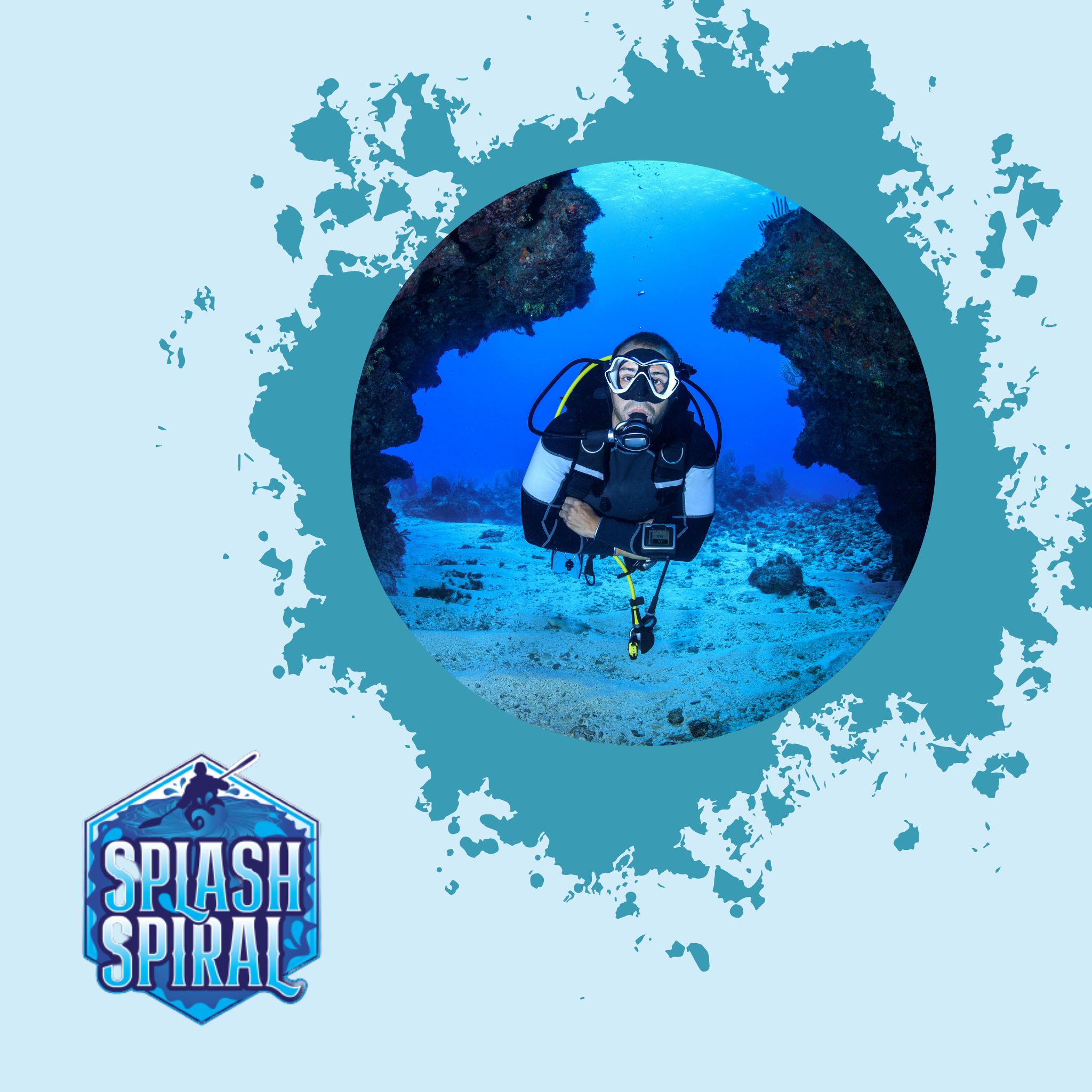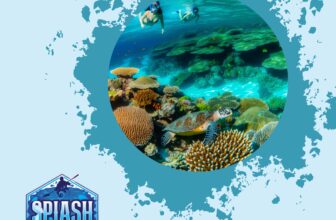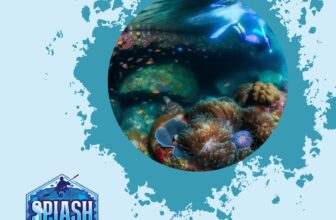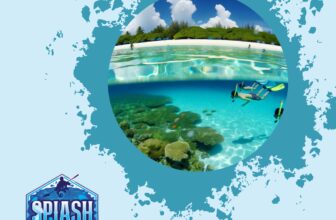
Drift diving is a form of scuba diving where divers are carried by the current and move with the flow. Instead of swimming against the current, drift divers allow themselves to be carried effortlessly through the underwater landscape. This type of diving can be done in both saltwater and freshwater environments, and it is gaining popularity among diving enthusiasts due to its unique experiences.
Importance of Going with the Flow
Going with the flow is an essential aspect of drift diving, as it allows divers to conserve energy while enjoying their surroundings. Drift diving can be both exhilarating and relaxing, but it requires a different mindset than traditional scuba diving. Rather than fighting against the current, drift divers must learn to work with it in order to maximize their enjoyment and safety.
The ability to go with the flow also has many benefits outside of scuba diving. In life, we often encounter situations that are out of our control or where we cannot change things no matter how hard we try.
Learning to go with the flow can help us navigate these situations more easily and effectively. So not only does drift diving provide a unique underwater experience, but it also teaches valuable life skills that can be applied outside of scuba diving as well.
The Basics of Drift Diving
How it Differs from Regular Diving
Drift diving is a unique type of scuba diving that involves drifting with the current instead of swimming against it. Unlike regular diving, where divers have more control over their movements, drift diving requires a different approach. You let the current take you where it wants to go, and you need to be able to adapt and adjust your movements accordingly.
This can be both exhilarating and challenging. Drift diving also requires a different set of skills than regular diving.
You need to be able to stay close to your dive buddy, communicate effectively, and navigate through the water column without getting separated from the group. It’s important to have good buoyancy control so you don’t damage any marine life or underwater terrain while drifting along with the current.
Equipment Needed for Drift Diving
The equipment needed for drift diving is similar to what’s used in regular scuba diving, with a few extra items thrown in. The most important piece of equipment is a drift line or surface marker buoy (SMB) that helps the boat captain locate you when it’s time to get back on board.
Other essential pieces of equipment include dive fins that are sturdy enough to handle strong currents and a dive computer that can track your depth and bottom time accurately. A wetsuit or drysuit will depend on water temperature as well as personal preference.
It’s also important for divers who want to try drift diving for the first time not only wear gloves but neoprene boots too–the latter will protect their feet from sharp rocks or uneven surfaces on the ocean floor caused by strong currents during dives. Overall, preparation is key when it comes to choosing gear for this kind of adventure: make sure all bases are covered before heading out into new waters!
Choosing the Right Location for Drift Diving
Best Places in the World for Drift Diving
If you’re looking for incredible drift diving locations, you have plenty of options. Some of the most famous drift diving locations are found in Indonesia, where powerful currents run between islands and create an underwater playground for divers.
One popular area is Komodo National Park, home to manta rays, sharks, and colorful coral reefs. Another favorite is Raja Ampat, a remote archipelago with some of the most biodiverse waters on Earth.
Another must-visit location for drift diving enthusiasts is Cozumel in Mexico. This Caribbean island is known for its clear water and diverse marine life.
Some of the most popular dive sites here include Palancar Reef and Santa Rosa Wall, where gentle currents allow divers to float along while taking in stunning vistas. If you’re looking for something a little closer to home (assuming you live in North America), consider heading to Hawaii.
The Hawaiian Islands are surrounded by deep ocean channels that create strong currents perfect for drift diving. In particular, Molokini Crater off the coast of Maui is a popular spot thanks to its crystal-clear waters and abundance of marine life.
Factors to Consider When Selecting a Location
When choosing a location for your next drift dive adventure, there are several factors to keep in mind. Firstly, consider your skill level as some locations may require more experience than others due to stronger currents or depth requirements.
Another key factor is weather conditions – check ahead before booking your trip as some areas may have more favorable weather during certain times of year. Additionally, be mindful of any seasonal changes that could affect visibility or water temperature.
You should also think about logistics such as transportation options and accommodations available nearby – particularly if you’re planning on travelling internationally! Make sure to factor in any costs associated with equipment rental, training courses, and other expenses.
Overall, choosing the right location is essential to ensure you have the best possible experience while drift diving. By considering all the factors in advance, you’ll be able to select a location that matches your skill level and preferences while also providing an unforgettable adventure beneath the waves.
Safety Precautions for Drift Diving
Importance of Proper Training and Certification
Drift diving can be an incredibly exhilarating experience, but it is important to understand that it comes with its own set of risks. As such, it is critical that anyone interested in drift diving first undergoes the proper training and certification.
Like any other type of diving, there are certain skills and techniques that need to be mastered before attempting a drift dive. For starters, you will need to become comfortable with knowing how to effectively use your buoyancy control device (BCD) so that you can maintain a safe depth throughout the dive.
Additionally, you will need to master underwater navigation techniques so that you don’t get lost or separated from your group during the drift. Knowing how to read ocean currents and interpreting changing water conditions is also important for staying safe during a drift dive.
Tips for Staying Safe During a Drift Dive
Once you have undergone the proper training and certification, there are several tips and precautions you should take when embarking on a drift dive. First off, make sure to always carry an emergency signaling device such as a whistle or horn in case you become separated from your group or run into other difficulties during the dive.
It’s also important not to stray too far from your group while drifting so as not to risk getting lost or losing sight of one another. You should also avoid touching any marine life while drifting as doing so could lead to dangerous encounters with venomous creatures.
Always make sure that someone who is not diving knows where you are going and when you expect to return so they can alert authorities if needed. By taking these basic precautions, anyone can safely enjoy the incredible thrill of drift diving without putting themselves in danger.
Going with the Flow: Techniques and Strategies
How to navigate during a drift dive
Drift diving is a unique experience that requires different navigation techniques than regular diving. Instead of using your fins to swim against the current, you need to learn how to go with the flow. To navigate during a drift dive, it’s essential to keep your body streamlined and pointed in the direction of the current.
You can use your arms to steer yourself by adjusting their position relative to your body. It’s also crucial to pay attention to your surroundings while drifting.
Look for landmarks or other visual cues that can help you stay oriented, such as rocks or coral formations. If you have a compass or other navigation tools, make sure you know how to use them effectively in a drifting environment.
Tips for conserving energy while drifting
Drift diving may seem effortless compared to regular diving, but it can still be physically demanding if you’re not careful. One way to conserve energy is by streamlining your body and minimizing unnecessary movements. Don’t wave your arms or legs around excessively as this will only tire you out faster.
Another tip is to maintain neutral buoyancy so that you’re not using up all of your air trying to stay at the same depth. Use small adjustments with your buoyancy compensator device (BCD) instead of large movements that require more effort.
Remember that there’s no need to rush during a drift dive. Enjoy the ride and take in all of the sights around you without feeling like you need to move quickly from one spot to another.
Conclusion
Navigating during a drift dive requires different techniques than traditional diving due in part because it’s important not only going where we want but also going where we are taken with ease and safety.. Make sure you streamline your body and pay attention while drifting, including using a compass or other navigation tools. To conserve energy while drifting, maintain neutral buoyancy and avoid unnecessary movements. Remember to pace yourself and enjoy the unique experience that drift diving offers.
The Benefits of Drift Diving
Unique experiences and sights that can only be seen through drift diving
One of the biggest benefits of drift diving is the unique experiences and sights that can only be seen through this type of diving. Drifting with the current allows you to cover more ground, explore new areas, and see marine life in a way that is impossible with regular diving.
The thrill of drifting along with the current while observing amazing marine life around you is an experience like no other. In addition to covering more ground, drift diving also allows you to see different types of marine life than what you would normally see while scuba diving.
Schools of fish, large pelagic species like sharks and manta rays, and other large marine creatures are often found in areas with strong currents. Without drift diving, these creatures may never be encountered by divers.
Environmental benefits of not disturbing marine life
Another benefit of drift diving is its environmental impact. Because divers are carried along by the current rather than having to swim against it, there is less disturbance to the underwater environment.
This means less sand kicked up into the water which can reduce visibility for other divers. Drift diving also has the potential to reduce diver impact on fragile coral reefs or delicate sea grass beds.
With traditional scuba diving methods, divers must constantly fin against strong currents causing damage to these sensitive ecosystems over time. In contrast, drift divers can simply observe without disturbing these habitats further.
Moreover, by not touching or disturbing marine life during a dive there’s less stress put on them which helps preserve their natural state. This way we can help maintain a healthy ecosystem for generations to come.
Embracing New Perspectives
Another benefit of going with the flow during a drift dive is that it provides a unique perspective on underwater topography that would otherwise be impossible. You get to witness the landscape from a totally different perspective.
Being carried along by the current, you can see underwater cliffs, walls, and caves from a totally new angle. The feeling of gliding along through an underwater world is truly unforgettable.
Overall, drift diving offers a unique opportunity for divers to experience marine life in a way that would otherwise be impossible while having minimal impact on the natural environment. It’s an adventure like no other and definitely worth experiencing at least once in your scuba diving career!
Advanced Techniques for Experienced Drift Divers
Night Dives and Other Specialized Techniques
For experienced drift divers, there are many specialized techniques available that will enhance the dive experience. One of the most popular techniques is night diving.
Night diving provides a whole new perspective on the underwater world, as many marine creatures come out to feed and hunt at night. It can be an eerie and exhilarating experience to see the glowing corals and bioluminescent creatures in their natural habitat.
Another specialized technique is wreck diving. Wreck diving allows you to explore sunken ships or airplanes that have become artificial reefs.
These wrecks often attract a variety of marine life, making them ideal locations for drift dives. However, caution should always be taken when exploring wrecks, as they can be hazardous if not properly explored.
How to Become an Expert at Drift Diving
To become an expert at drift diving, it is essential to undergo proper training and certification from a reputable organization such as PADI or NAUI. The training involves learning how to navigate underwater currents while keeping yourself safe from any potential hazards such as rough terrain or marine creatures.
Consistent practice is also key to becoming an expert at drift diving. It is important to remember that every dive site presents different challenges and requires different skills based on the level of current flow or water temperature.
Another way to become an expert is by learning from other experienced divers who are well-versed in drift diving techniques. By watching and learning from others, you can gain valuable insights into how best to approach different situations during your dives.
Advanced techniques for experienced drift divers include specialized dives such as night dives and wreck dives, while becoming an expert requires proper training, consistent practice, and learning from more experienced divers in this field. With time and effort invested into these areas of expertise, drift diving can become an incredibly rewarding and exhilarating experience for anyone who is willing to put in the work.
Conclusion
Drift diving is a unique and exhilarating experience that allows divers to go with the flow and explore the underwater world in a different way. As we have seen in this article, it requires special equipment and training to do safely, but the payoff is well worth it.
By letting the natural currents take you along, you can see amazing sights and wildlife that are not accessible through traditional diving methods. Remember that choosing the right location for your drift dive is crucial – factors like water temperature, visibility, and current strength can make or break your experience.
Always prioritize safety by getting certified and practicing good habits like buddy diving and conserving your energy during long drifts. Going with the flow also applies beyond just drift diving – it’s a mindset that can be applied to many aspects of life.
By letting go of control and embracing uncertainty, we can open ourselves up to new experiences and opportunities. So next time you find yourself resisting change or trying to swim against the current, remember what you learned from drift diving: sometimes it’s better to just go with the flow.
In short, if you’re looking for adventure beneath the waves or simply seeking a new perspective on life, consider giving drift diving a try. With these tips in mind, you’ll be ready for an unforgettable journey through some of the world’s most beautiful ocean currents.







